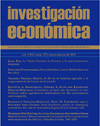FINANCIALIZATION, INCOME DISTRIBUTION AND THE CRISIS
Contenido principal del artículo
Resumen
The paper argues that the process of financialization has profoundly changed how capitalist economies operate. The financial sector has grown relative to the real economy and become more fragile. Non-financial businesses have adopted shareholder value orientation, which had negative effects on investment. Working class households became squeezed because of rising inequality and have become more indebted, in particular in countries with real estate bubbles. Financial globalization has given rise to growing international imbalances, which have allowed two growth models to emerge: a debt-led consumption growth model and an export-led growth model. Both should be understood as reactions to the lack of effective demand due to the polarization of income distribution. The resulting finance-dominated accumulation regime is characterized by slow and fragile growth. The crisis is best understood as the outcome of the interaction of financialization and changes in income distribution.
Detalles del artículo
Cómo citar
Stockhammer, E. (2013). FINANCIALIZATION, INCOME DISTRIBUTION AND THE CRISIS. Investigación Económica, 71(279). https://doi.org/10.22201/fe.01851667p.2012.279.37326
Los autores que publiquen en esta revista acceden a las siguientes condiciones:
a) Los autores retienen los derechos de copia (copyright) y ceden a la revista el derecho de primera publicación, con el trabajo asimismo bajo la licencia Creative Commons Attribution License que permite a terceros utilizar lo publicado siempre que hagan referencia al autor o autores del trabajo y a su publicación en esta revista.
b) Los autores son libres de realizar otros acuerdos contractuales para la distribución no exclusiva del artículo que publiquen en esta revista (como puede ser incluirlo en una colección institucional o publicarlo en un libro), siempre que indiquen claramente la publicación original del trabajo en esta revista.
